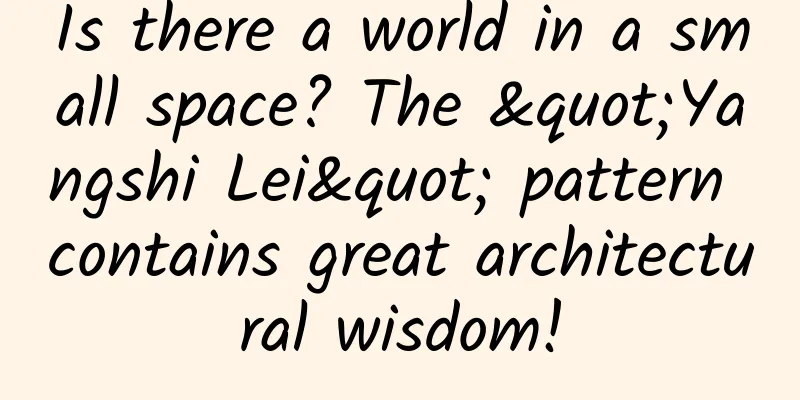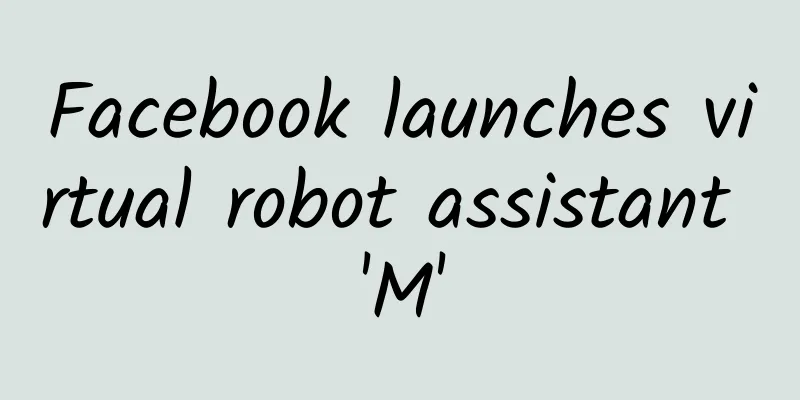There is a way to save the dinosaurs! But it's 66 million years too late...

|
September 27, 2022, Beijing time. For two asteroids named Dimorphos and Didymos , this should have been an ordinary day in their leisurely wandering life in the solar system, the same as every day for billions of years. The two asteroids form a binary star system, and they are also translated into Chinese as twin small stars and twin big stars . Dimorphos (about 160 meters in diameter) and its primary twin Didymos (about 780 meters in diameter), photographed by the DRACO camera on the DART spacecraft at a distance of about 920 kilometers | NASA/Johns Hopkins APL [1] However, at 7:14 a.m. (Beijing time) on that day, this tranquility was suddenly broken by a human spacecraft that flew over. The twin stars were eating hot pot and singing songs just fine in the last second, and in the next second they were hit head-on by the spacecraft at a speed of over 6 kilometers per second. The onboard "dashcam" of the spacecraft faithfully captured the scene before the space accident occurred. The last 5 and a half minutes of the twin asteroid (the smaller one) before it was hit, captured by the DRACO camera on the DART spacecraft. Except for the last 6 frames, the rest of the video was sped up 10 times. In the second half of the video, as DART approaches, the twin asteroid gradually fills the entire screen, until the last photo only transmits a small part, and the DART spacecraft is killed by the impact | NASA/Johns Hopkins APL [1] After the accident, both parties were emotionally stable. After all, the spacecraft had been shattered to pieces in the accident, and the twins could only helplessly accept their suddenly changed "star lives". Just like the dinosaurs on Earth 66 million years ago, whose fate was changed by an asteroid. The most mainstream hypothesis about the extinction of dinosaurs is that 66 million years ago, an asteroid/comet with a diameter of more than 10 kilometers hit the Yucatan Peninsula in Mexico, creating a crater with a diameter of more than 200 kilometers, which severely affected the atmosphere and ecological environment of the entire earth at that time, and then caused the extinction of many animals and plants including most dinosaurs - this is the fifth mass extinction event on Earth, known as the "Late Cretaceous Extinction" | stock.adobe.com The good news is that there is no life on the twin asteroids, so no life was harmed in this accident. However, the massive Earth remained unmoved by a small collision, while this 160-meter-diameter asteroid is much weaker and more easily changed by external forces. Size comparison of the DART probe and the asteroid Dimorphos | Adapted from NASA/Johns Hopkins APL [2] In the month after the impact, the twin asteroids' shapes and orbits changed significantly - the spacecraft DART (full name " Double Asteroid Redirection Test Mission ") traveled thousands of miles in space for 10 months to hit the asteroid, just to cause these changes. (For details about the launch and basic information of the DART mission, see: Hitting an asteroid, revenge for the dinosaurs! Humanity launches the first planetary defense exercise) (Top) Schematic diagram of the DART impact with an asteroid; NASA/Johns Hopkins APL [2] Accident scene On September 11, 2022, 15 days before the impact, the DART spacecraft pre-separated a cubic satellite LICIACube (pronounced LEE-cha-cube). This 6U CubeSat, developed by the Italian Space Agency, can adjust its orbit using its own propulsion system (thrust 50mN, specific impulse 40s), make a close flyby of the twin stars a few minutes after the impact, and confirm the impact with its own camera. (Top) Animation of the DART probe separating from the LICIACube satellite | NASA/Johns Hopkins APL [2] (Below) Actual footage of the LICIACube satellite | NASA/Johns Hopkins APL/Ed Whitman [3] The LICIACube satellite carries two optical cameras: the narrow-field-of-view black-and-white camera LEIA and the wide-field-of-view color (RGB-IR) camera LUKE . 165 seconds after the impact, LICIACube made a close flyby of the accident site and took over the observation of the twin planets after the DART spacecraft was killed. The LUKE camera captured that after the collision, a large amount of material was splashed out from all around the twin stars , "blooming" in space like "fireworks" . The LICIACube satellite gradually approaches and then moves away from two asteroids. The one at the bottom is the twin asteroids. The closest distance to the binary system is only 56.7 kilometers. | ASI/NASA [2] The LEIA camera also captured the rapid brightening of the twin stars after the collision. The twin stars have little change in brightness and appear to be unaffected. Photo taken at a distance of 1,020 km | ASI/NASA [2] In the earliest images released by the LICIACube satellite, two asteroids were severely overexposed, making it seem that the Italian camera was not very smart. ASI/NASA/Alexandra Witze [4] Fortunately, the image processing effects are still amazing. The radiation lines formed by the splashes of the impact around the twin stars are clearly visible, extending over a range several times the diameter of the asteroid . ASI/NASA/APL [5] When DART collided with the twin asteroids, its mass was only about 570 kg, which is estimated to be less than one millionth of the mass of the twin asteroids. It was only an ant hitting a tree, but it caused such a tragic accident. On the one hand, the collision speed of more than 6 km/s is really impressive, and on the other hand, it is also "blame" that the twin asteroids themselves are not strong enough . In the close-up images of the twin asteroids sent back by the DART spacecraft before the impact, the asteroid, which is about 160 meters in diameter, has a rocky surface and is a typical type of asteroid called a " rubble pile ". The surface of the twin asteroid was photographed by the DRACO camera carried by the DART probe 11 seconds before impact, at a distance of 68 kilometers. | NASA/Johns Hopkins APL [1] This type of asteroid has a loose texture, low density, and high porosity. It can be understood that it is formed by many large and small rocks gathered together by weak gravity. The "bonding force" between the rocks is very weak, and they may fall off if they are hit or shaken a few times. Therefore, when planetary scientists saw the images of the twin asteroids' surfaces, they already had a full psychological expectation of the tragic accident scene of the twin asteroids. After all, human spacecraft had visited several rubble-pile asteroids at close range before, and they were quite familiar with their properties. We have introduced before that Itokawa (535 m × 294 m × 209 m) visited by Hayabusa, Ryugu (about 900 m in diameter) visited by Hayabusa 2, and Bennu (about 500 m in diameter) visited by Pluto are all rubble pile asteroids. JAXA、NASA If you ignore the differences in brightness and color (the twin asteroids are S-type, Bennu is C-type, and they have different compositions), you might even find it difficult to tell which asteroid its surface is. (Top) The surface of the twin asteroids photographed by the DART probe’s DRACO camera before impact. The image is about 30 meters wide | NASA/JHUAPL/JPMajor [6] (Below) The surface of the asteroid Bennu as captured by the Pluto PolyCam on March 21, 2019. The image is 48.3 meters wide, and the bright rock in the upper left corner is 7.4 meters wide | NASA/Goddard/University of Arizona [7] Evidence from ground-based and close-in detection of asteroids in recent years shows that most asteroids with a diameter of hundreds of meters have such a loose "rubble pile" structure. This is good news for humans - these asteroids are "puffy", and even if they are going to hit the earth in the future, human technology can relatively easily change or even destroy them. In short, after confirming the accident site at close range, the LICIACube satellite left and never left the binary asteroids again. Next, it will be up to the Earth's telescopes to watch the show. Earth-based telescopes show their power In order to observe this rare collision, many ground-based telescopes and space telescopes orbiting the Earth are gearing up and waiting. Under the observation resolution of these telescopes, the twin big stars and the twin small stars cannot be distinguished, so what we see is the overall brightness change of the binary star system. Distribution of ground-based and space telescopes that plan to conduct post-collision observations of twin asteroids. Of course, some of them ultimately failed to capture them | Johns Hopkins University Applied Physics Lab The following is the equipment show results display time: When the impact occurred, of course nothing could be photographed in places where it was already daybreak local time (after all, it was already past 7 a.m. Beijing time); in areas where it was still night local time, telescopes in the Earth's southern hemisphere had better observation conditions, so it was easier to capture the precious moments before and after the impact. Italy's Virtual Telescope Project used the 12-inch telescope at the Klien Karoo Observatory in South Africa to track and capture the changes in brightness of the twin-small star system before and after the impact. It can be clearly seen that the material ejected after the impact is covering the left side of the binary star system like a cloud. The impact time is 23:14 UTC on September 26, 2022. The duration of the animation is 19 minutes, from 23:07 to 23:26. Sputtering begins at about 23:19. | Gianluca Masi (Virtual Telescope), Berto Monard (Klein Karoo Observatory) [8] In the animated picture, the moving dots are the twin-largest star and twin-smaller star system. Gianluca Masi (Virtual Telescope), Berto Monard (Klein Karoo Observatory) [8] The Les Makes Observatory on Reunion Island in the Indian Ocean captured the following image: the asteroid began to brighten almost immediately after the impact, and was very bright seconds later. The ejecta ejected by the impact spread into a cloud-like form in less than a minute, and began to move eastward and slowly dissipated. Les Makes observatory captured the dramatic change in brightness of the binary system from a few seconds to half an hour after the impact. Replayed 3 times | Les Makes observatory, J. Berthier, F. Vachier / T. Santana-Ros / ESA NEOCC, D. Föhring, E. Petrescu, M. Micheli [9] The South African Astronomical Observatory (SAAO) and the ATLAS (Asteroid Terrestrial-impact Last Alert System) project, which is dedicated to surveying asteroids, also captured similar scenes. Photo taken by South African Astronomical Observatory▼ Image taken with the 1-meter Lesedi Telescope in Sutherland, South Africa | Nicolas Erasmus (SAAO) , Amanda Sickafoose (PSI) [11] ATLAS Project Shooting▼ This image was taken using a 0.5-meter telescope located in Sutherland, South Africa. The ATLAS program is jointly operated by NASA and the University of Hawaii. This image was taken using a telescope located in Sutherland, South Africa. The entire animation lasts about 2 hours. | ATLAS [11] In addition, some small-aperture telescopes have also captured the changes in the binary stars after the collision, such as the scene below, which was captured with an 11-inch telescope at Neot Smadar in Israel. For such a small-aperture telescope, the effect can be called amazing. Photographed by Eran Ofek and David Polishook [12] But compared to ground-based telescopes, NASA's twin space telescopes, Hubble and James Webb , are even more amazing. In the hours after the impact, the two space telescopes took photos of the binary system in visible light and infrared bands, respectively, and the material splashed by the impact was bright and dazzling. This is also the first time that the two telescopes have observed the same target in space at the same time. Hubble (left, visible light) and James Webb (right, infrared) space telescopes captured the binary system a few hours after the collision, showing bright radiation from material ejected from the collision surrounding the binary stars. | NASA, ESA, CSA, Jian-Yang Li (PSI), Cristina Thomas (Northern Arizona University), Ian Wong (NASA-GSFC), Joseph DePasquale (STScI), Alyssa Pagan (STScI) [13] Hubble captured 45 images in its first round of observations before and after the impact, clearly recording the process of the twin stars being hit, with the ejecta around them gradually increasing and becoming brighter. These bright streaks of ejecta had not diminished even eight hours after the impact. The Hubble Space Telescope captured the changes in the ejecta 22 minutes (left), 5 hours (middle), and 8.2 hours (right) after the twin asteroids were impacted. The left side shows the impact direction of the DART spacecraft | NASA, ESA, Li Jianyang (PSI), Alyssa Pagan (STScI) [13] The animated picture is more obvious▼ This is a composite of three images taken by the Hubble Space Telescope 22 minutes, 5 hours, and 8.2 hours after the twin asteroid collision. The brightness of the twin-asteroid system increased by a factor of three | NASA, ESA, Jian-Yang Li (PSI), Alyssa Pagan (STScI) [13] Webb conducted observations for five hours before and after the impact, taking a total of 10 images in the first round. The spread of the sputtering material is larger in the infrared band because more dust can be seen in the infrared band than in the visible light band. (The brightness of dust in the infrared band is proportional to the square of its size, and in the visible light band it is proportional to the product of the square of its size and albedo. The albedo of small celestial body dust particles in the visible light band is very low, so it is brighter in the infrared band.) Animated composite of multiple images taken by the Webb Space Telescope within five hours of the twin asteroid collision | NASA, ESA, CSA, Cristina Thomas (Northern Arizona University), Ian Wong (NASA-GSFC), Joseph DePasquale (STScI) [13] Due to geographical location, telescope performance, weather and other factors, only a few lucky ground-based telescopes were able to capture the changes a few minutes after the impact. Fortunately, the "fireworks" created by the collision were large and long-lasting enough that other ground-based telescopes also had the opportunity to capture them afterwards. For example: 22 hours after the impact, the Xingming Observatory used the 0.6-meter NEXT telescope to photograph the twin-large-twin-small star system. Although the position of the binary system at this time was not ideal for the NEXT telescope in Xinjiang, some splashing plumes can still be clearly seen in the image. The full name of the NEXT telescope is "Ningbo Education Bureau-Xinjiang Astronomical Observatory Telescope". Its main targets are asteroids, variable star photometry, and GRB rapid response observations. The impact time is 23:14 UTC on September 26, 2022. The observation time of this picture is 21:31-22:30 UTC on September 27 | @新疆幸运天空Photographed by @交阯越人 29 hours after the impact, the Telescope Live Observatory in Chile captured images of ejecta surrounding the binary system, and faintly visible ejecta in one direction began to elongate. E. Guido, M. Rocchetto, G. Savini, S. Fossey, Telescope Live [14] The twin stars began to transform again. It has grown two tails. Two days after the impact, the SOAR telescope in Chile captured the impact ejecta flying near the twin asteroids, which were much weaker but had not completely dissipated. A "tail" more than 9,600 kilometers long had already formed, which was caused by part of the ejected dust being "pushed" by the solar radiation pressure, similar to the "tail" of a comet. The SOAR telescope is operated by the National Optical-Infrared Astronomy Research Laboratory (NOIRLab) | CTIO /NOIRLab /SOAR /NSF /AURA /T. Kareta (Lowell Observatory), M. Knight (US Naval Academy) [5] What’s even more amazing is that on October 8, 2022, 285 hours after the impact, the Hubble Space Telescope discovered that the twin stars had grown a second “tail”! The blue radiating streaks in directions other than the dust tail are diffraction streaks, also known as “starbursts” in Hubble’s images | Adapted from: NASA/ESA/STScI/Hubble [15] The two "tails" remained clearly visible at least until Hubble's observation on October 11. Comparison of images of the binary system taken by the Hubble Space Telescope's WFC3 camera on October 8 and 11, 2022. The DART spacecraft's impact comes from the 10 o'clock position, and the two "tails" extend in the direction of the extension of the sun-asteroid line | NASA, ESA, STScI, Jian-Yang Li (PSI)/Joseph DePasquale [15] Although growing a tail is a common occurrence for comets, the tails of comets and the tails of twin planets are quite different . When a comet flies near the sun, the volatiles and dust sealed in the comet nucleus by low temperatures will be awakened by the sun, giving rise to a cloud-like coma and a long comet tail. The comet tail often forks into two: one is the "gas tail " (also called the "ion tail ") formed by the solar wind pushing the gas and plasma in the coma, which appears in the direction away from the sun; the other is the " dust tail " (dust tail) formed by the solar radiation pressure pushing the dust particles in the coma, which generally appears behind the comet's flight path and between the ion tail. Schematic diagram of the direction of the gas tail and dust tail | Юкатан Because dust particles of different sizes are affected differently by the solar radiation pressure, dust tails are usually distributed over a wider range and have a certain curvature. The comet's ion tail (blue) and dust tail (yellow-gray) | Photo: Jerry Lodriguss But the twin asteroids' tails are obviously not produced by volatilization, and the two dust tails are also significantly different from the typical dust tails and ion tails of comets. How can the twin asteroids have two dust tails? Planetary scientists are still exploring the reason. It really got shorter! “Fireworks” are certainly beautiful, but the DART mission has more than just this small ambition in coming all the way to hit the asteroid. What it wants to know is: how much can human spacecraft change the orbit of an asteroid through active impact with limited energy ? In this way, if an asteroid really hits the earth in the future, humans will have a better idea of whether their technological level can fight against the asteroid. This is also the main reason why the DART mission, whose full name is "Double Asteroid Redirect", chose twin asteroids as impact targets: the orbital changes of the binary asteroid system are easier to observe. According to original calculations , the impact of the DART spacecraft could shorten the orbital period of the twin asteroids in the binary star system from the original 11 hours and 55 minutes by several minutes . The DART mission team has already made arrangements on how to observe these tiny periodic changes of a few minutes. Although asteroids do not emit light, they can reflect sunlight. For a twin-twin asteroid binary system, when the twin asteroid flies into the shadow of the twin asteroid, the overall reflected brightness of the two asteroids will be greatly reduced; when the twin asteroid flies in front of the twin asteroid, it will periodically block part of the twin asteroid's reflected light (that is, "transit"), resulting in a smaller decrease in the overall brightness of the binary. By continuously observing the brightness of the binary star system, ground-based astronomical telescopes can confirm the new period of the companion twin star orbiting the primary twin star after the impact through the period of brightness changes - this is much easier than observing the tiny orbital changes of a lonely asteroid. Schematic diagram of the change in brightness of a binary star system as seen from Earth as the twin asteroids orbit the twin asteroid. By continuously monitoring the brightness, ground-based telescopes can determine the orbital period of the twin asteroids | NASA/APL/UMD [5] However, the periodic variations ultimately observed far exceeded the expectations of the DART mission. After more than ten days of repeated observations, multiple observatories, universities and research institutions around the world collaborated to observe a new period after the twin stars collided: 11 hours and 23 minutes - not only did it become shorter, but it became ****ing shorter by a full 32 minutes ! Brightness changes of the twin-twin system measured between September 27 and October 6, 2022 | NASA, Johns Hopkins APL, Institute of Astronomy of the Czech Academy of Sciences, Lowell Observatory, JPL, Las Cumbres Observatory, Las Campanas Observatory, European Southern Observatory Denmark 1.54-meter Telescope, University of Edinburgh, Open University, Catholic University of San Concepción, Seoul National Astronomical Observatory, University of Antofagasta, University of Hamburg, Northern Arizona University [5] In addition to brightness observations, NASA's Goldstone Planetary Radar in California and the National Science Foundation's Green Bank Observatory in West Virginia also observed the position changes of the binary star system through radar , confirming that the orbital period of the twin asteroids has indeed been changed . Who asked the Arecibo Observatory, which previously observed the twin-asteroid system, to close down? The position changes of the binary star system in radar images on October 4 and 9, 2022 are shown in the figure below. Data from NASA's Goldstone Planetary Radar on October 4, 2022, and from a joint Goldstone and Green Bank Observatory radar observation on October 9 | Adapted from: NASA/Johns Hopkins APL/JPL/NASA JPL Goldstone Planetary Radar/National Science Foundation's Green Bank Observatory [5] In the radar images of the past two days, the twin stars did not appear where they were supposed to be. Adapted from: NASA/Johns Hopkins APL/JPL/NASA JPL Goldstone Planetary Radar/National Science Foundation's Green Bank Observatory [5] **In short, it is clear and unequivocal that** humanity's first planetary defense mission was a great success and the orbit of the asteroid was indeed changed . Just like its birth, from the moment it was chosen by the DART mission for impact, it was no longer an unknown asteroid in the vast ocean of stars. One month later: The "tail" is still there, but... Observations of the twin stars have not yet stopped. Although the ejecta "cloud" around the twin stars has gradually dissipated, the dust tail formed is exceptionally persistent. On October 26 (Beijing time), 29 days after the impact, the Xingming Observatory's NEXT telescope captured the long "tails" of the twin stars. The picture shows UTC time | Photo taken by @新疆幸运天天, provided by @交阯越人 On October 27, one month after the impact, the 84-centimeter telescope of the Schiaparelli Observatory in Italy captured the "tails" of the twin stars. Luca Buzzi, Andrea Aletti How long will this dust tail last? How easily can a rubble-pile asteroid eject sand and dust and transform into an "active asteroid" with a tail? These are all topics that deserve further observation and exploration by planetary scientists. However, all stories about the surface of the twin planets temporarily stopped at the moment the DART spacecraft impacted. No ground-based or space telescope is capable of taking high-definition images of the surface of the twin asteroids. The DART spacecraft's impact has left the surface of the twin asteroids in a state of shock that can only be solved by its successor, the European Space Agency's Hera . Hera is scheduled to be launched on a SpaceX Falcon 9 rocket in 2024 and arrive at the twin-big star-twin-small star system in 2026. By then, the pair of asteroids will become the first pair of asteroids to be explored twice by human probes at close range. Schematic diagram of Hera's exploration of twin asteroids | ESA Just like this photo that the DART mission tried hard to transmit back at the last moment before the impact but ultimately failed to transmit, it seems to silently say "to be continued", and we are looking forward to the new probe to continue the glory. The last image sent back by the DART probe was taken by the DRACO camera on board the DART probe 1 second before the impact, when the spacecraft was about 6 kilometers from the surface of the asteroid. The red part is the image that was not sent back before it was interrupted | NASA/Johns Hopkins APL [1] References [1] NASA | DART's Final Images Prior to Impact https://www.nasa.gov/feature/dart-s-final-images-prior-to-impact [2] https://dart.jhuapl.edu/Gallery/ [3] NASA | DART Gets Its CubeSat Companion, Its Last Major Piece https://www.nasa.gov/feature/dart-gets-its-cubesat-companion-its-last-major-piece [4] NASA | First Images from Italian Space Agency's LICIACube Satellite https://www.nasa.gov/feature/first-images-from-italian-space-agency-s-liciacube-satellite [5] NASA | NASA DART Imagery Shows Changed Orbit of Target Asteroid https://www.nasa.gov/feature/nasa-dart-imagery-shows-changed-orbit-of-target-asteroid NASA | NASA Confirms DART Mission Impact Changed Asteroid's Motion in Space https://www.nasa.gov/press-release/nasa-confirms-dart-mission-impact-changed-asteroid-s-motion-in-space [6] 2022.09.27 Jason Major's Twitter https://twitter.com/JPMajor/status/1574775697431793666?s [7] NASA | NASA Mission Helps Solve a Mystery: Why Are Some Asteroid Surfaces Rocky? https://www.nasa.gov/feature/goddard/2021/nasa-mission-helps-solve-a-mystery-why-are-some-asteroid-surfaces-rocky [8] Double Asteroid Redirection Test (DART) impacted on Didymos/Dimorphos… and it was a huge show! https://www.virtualtelescope.eu/2022/09/27/double-asteroid-redirection-test-dart-impacted-on-didymos-dimorphos-and-it-was-a-huge-show/ [9] ESA | DART asteroid impact impresses in ESA's view from the ground https://www.esa.int/ESA_Multimedia/Videos/2022/09/DART_asteroid_impact_impresses_in_ESA_s_view_from_the_ground https://twitter.com/esaoperations/status/1574774088794521600?s [10] 2022.09.27 SAAO's Twitter https://twitter.com/SAAO/status/1574688994201255936?s [11] 2022.09.27 ATLAS Project's Twitter https://twitter.com/fallingstarIfA/status/1574583529731670021?s 2022.09.28 ATLAS Project's Twitter https://twitter.com/fallingstarIfA/status/1574828954980159493?s [12] 2022.09.27 David Polishook's Twitter https://twitter.com/DPolishook/status/1574727091307831296?s [13] NASA | Webb, Hubble Capture Detailed Views of DART Impact https://www.nasa.gov/feature/goddard/2022/webb-hubble-capture-detailed-views-of-dart-impact https://twitter.com/comets77/status/1575118862978355201?s [15] NASA's Hubble Spots Twin Tails in New Image After DART Impact https://hubblesite.org/contents/news-releases/2022/news-2022-056 https://www.nasa.gov/feature/nasa-s-hubble-spots-twin-tails-in-new-image-after-dart-impact Author: haibaraemily Editor: Steed Review: Xiaolong Hubble, Jiaozhi Yue People Guokr (ID: Guokr42) If you need to reprint, please contact [email protected] Welcome to forward to your circle of friends Source: Guokr |
<<: How harmful are secondhand smoke and thirdhand smoke?
Recommend
The ninth-generation console war between Microsoft, Sony, and Nintendo, the final battle before the advent of cloud gaming
Every 15 years, a major new technology platform e...
Chengdu University of Traditional Chinese Medicine: Research finds that acupuncture is promising for treating chronic urticaria
A recent study of more than 300 patients with chr...
Apple's hardcore fans complain: software quality is declining
[[126181]] Marco Arment, who enjoys a high reputa...
Create explosive advertising materials at 0 cost!
The author has been engaged in advertising operat...
A simple way to quickly and effectively increase real reviews on the App Store!
No matter how the industry spreads that reviews a...
March marketing calendar, worth a look!
After the lively Spring Festival holiday and chas...
Black-headed gull: Don’t call me the “king of eating”, I am the “wisest” among birds
Dear family, let's meet the black-headed gull...
The powerful "king of soil": the "universal soil" in ultra-deep drilling projects
News reports that my country's oil and gas dr...
Vanilla Sister "14 Practical Ways to Control Women" Male Sexual Skills Collection
Introduction to the training course content: Many ...
Review: Key points for operating short video content on Douyin with tens of millions of followers!
Mengpo Nineteen is a nineteen-year-old intern. Sh...
Is slime mold cultivation a new trend? What exactly is this new favorite among young people? !
When you think of pets, what comes to mind? Cats?...
A Brief History of China's Observatories | Why did ancient civilizations always like to look up at the sky?
Archaeology is often a job of digging deep into t...
It seems we have been fooled, the universe is hiding it! What is dark matter?
We searched for it, but it was nowhere to be foun...
Latest news, expected in 2027!
Recently, Yi Rong, chief designer of the Long Mar...
Traffic 2.0 era: How do operators manage data traffic?
1. China Telecom’s “Flow Treasure” and China Unic...
![[Smart Farmers] Don’t worry, foodies! This “exotic fish” can survive in saline-alkali land](/upload/images/67f23ca2386c0.webp)








